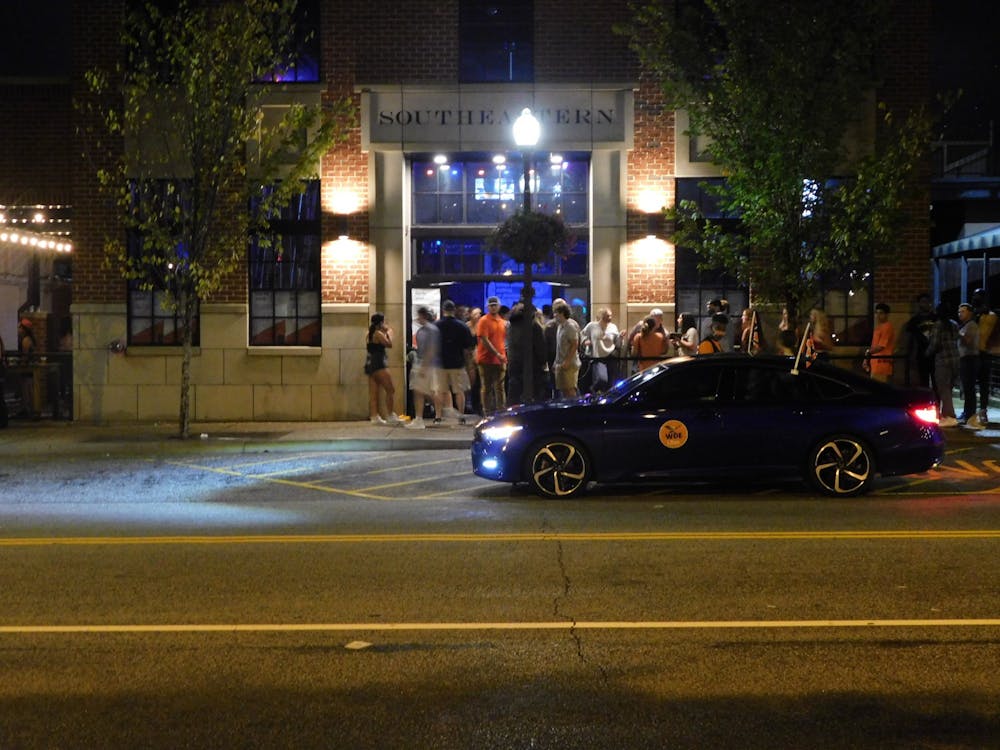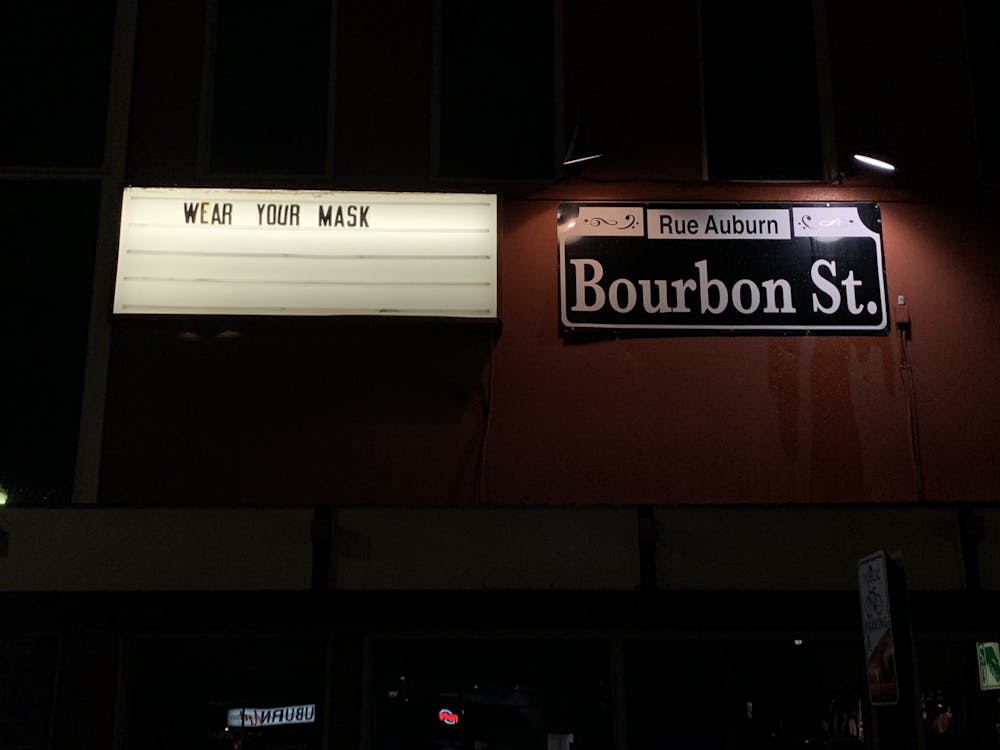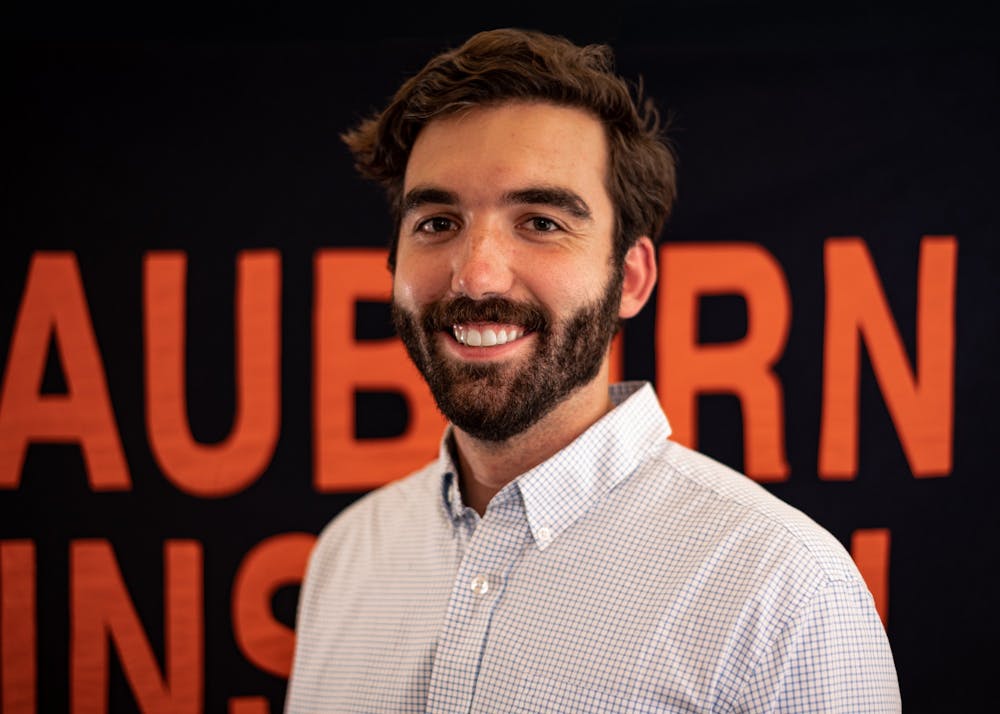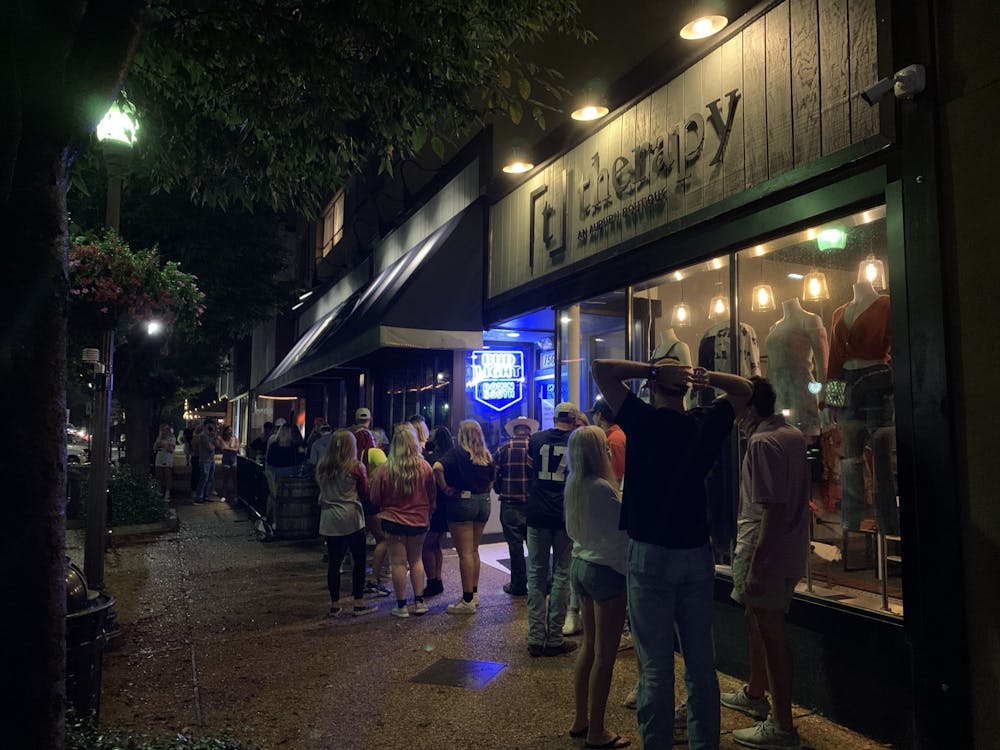On Saturday, Oct. 10, students were ordering drinks in Skybar after 11 p.m., a relatively new occurrence since returning to campus this fall.
On Sept. 29, the Alabama Beverage Control Board voted to lift its 11 p.m. cutoff of alcohol sales at bars and restaurants. The policy was instituted earlier in the year due to concerns of the spread of the coronavirus. The City of Auburn quickly followed suit, choosing on Oct. 1 to rescind the City’s local state of emergency, which previously prohibited walk-up bar service. From Aug. 27 to Oct. 1, customers had to be seated at bars to order a drink.
During the first home football game of the year, downtown Auburn was deemed an entertainment district. Establishments could set up outdoor bars that offered walk-up service, but all sales inside the bars were supposed to be limited to seated customers.
So, on the night of the first home game since restrictions on bars have been significantly eased, students and young people gathered in large crowds downtown, some feeling that things were somewhat normal again and that while the game that many of them attended paled in comparison to past seasons, the bars they frequented were beginning to feel like they were before.
At 7 p.m., after the game ended, students cut across in droves the intersection of College and Magnolia. A few were wearing masks; others were not. Fans were asked to not roll the Toomer’s Oaks this year, and few students did. Following a close game, the trees would likely be solidly draped in years past. But the smaller crowd at the game meant there were simply fewer people to heave toilet paper.
Other traditions, like tailgating, have fallen to the wayside this year. Drew Beckwith, sophomore in computer science, said that’s kept it from feeling like a normal game day.
“You walk on campus and no one’s there,” Beckwith said. “You don’t see the big tents. Literally no one’s on campus, only people going to games. If you’ve never seen it, then it wouldn’t even be different, but since I’ve seen everyone being there, it’s crazy.”
Many students said that the energy inside Jordan-Hare Stadium has been low this year. Jackson Cook, junior in wildlife enterprise management, swiped his Tiger Card and left on Saturday, which students do to avoid earning “points” on their ticketing account.
“I’m a junior, so I witnessed it freshman and sophomore year — it was great — and then the energy is just not the same this year,” Cook said.
He attended the first game against Kentucky.
“When they score, it’s silence. We tried it, but it’s not there.”
Cook was downtown getting food and said he probably wasn’t going to go to any of the bars that night. They’ll all be too crowded, he figured, since more people wanted to go downtown now that restrictions have been eased.
“Skybarrrrr,” someone shouted, walking past Little Italy’s.
“It’s a super long line,” somebody told him as they passed on the sidewalk.
At 10:30 p.m., patrons were standing in front of Pieology waiting to get into Southeastern.
“You know, you wait in line forever on gameday, and today is a gameday … and so this just feels like normal,” said Maylon Sanders, senior in apparel merchandising, who was in line at Southeastern Bar. “Before, when [the cutoff] was 11 p.m., that was obviously very different, but I think they just encouraged a lot more house parties, because I’ve heard a lot more people having them.”
The long lines and high cover charge — $20 at Southeastern during parts of the night — made downtown feel normal for some people, especially after attending a football game with restrictions that would make it nearly unrecognizable to years past.
“This feels normal,” Sanders said. “Obviously [the bars] don’t really care if you have a mask on; they honestly just act like they do.”

Most patrons didn’t wear their mask until they were about five people from the door. Then, mask up; ID out; step in; order a drink; mask off. This was the routine for the night, said Noah Sells, freshman in psychology. Generally, there was for many of the people visiting downtown a feeling of contempt towards wearing a mask, even if for short periods of time.
“Ugh, mask,” a woman said as she got hers out of her purse and entered Mellow Mushroom at around 8 p.m. “Such a waste of time,” a young man, who appeared to be her son, replied. “Such a waste.”
“Why are y’all wearing masks?” a young man said jokingly to a group of friends he met on Magnolia Avenue near 17-16.
Even if masks were somewhat loosely enforced and bars could now sell alcohol to standing customers, there were still restrictions, like a 50% capacity limit, which all bars were supposed to adhere to. But that may not have been the case at some bars. Sells, who was trying to get back into Southeastern — he had left to get a sandwich — said the bar was packed when he visited Friday and Saturday night, which he was glad to see.

“Yeah, it’s going back to normal,” Sells said. “It feels good to see a bunch of people out again.”
For businesses, bigger crowds were nice to see too, as many bar owners and employees have said they have taken big losses throughout the pandemic. Victoria Patton, a medical assistant student through the outreach program at Auburn University, was working the door at Avondale Bar and Tap Room Saturday night. Avondale saw a pretty good crowd, which may have been due in part to some of the eased restrictions, she said.
“I think it kind of lit a fire under everybody to go out, maybe spend some money,” Patton said. “Fingers crossed it’s good for everyone.”
Patton still had concerns over the spread of COVID-19, which she said she contracted earlier this year and from which she said she suffered memory loss. Deciding which establishments can be open and when and to what extent are hard questions, ones that she is still unsure how to answer.
“I mean, I’ve seen it from both sides, so honestly it’s just like, ‘what is the right answer?’,” she said. “Because you want people in town here. I mean all these really nice business owners that we all know and love, we want them to be able to prosper, but at the same time, we want everyone to be safe. So really, no one will be happy.”
There’s plenty of questions that are currently unanswered right now. The complete outcome of lightened bar restrictions and partying students is unknown. Angela Burns, senior in biomedical science, said it’s too early to know, but right now, downtown is a little corner where things are normal, a place where COVID-19 is an afterthought.
“As of right now, I think it’s just a little bit too early to quite tell,” she said. “But it definitely seems like there’s a lot of people, and it doesn’t really seem like there’s too much of a pandemic going on at this moment.”
Do you like this story? The Plainsman doesn't accept money from tuition or student fees, and we don't charge a subscription fee. But you can donate to support The Plainsman.

Evan Mealins, senior in philosophy and economics, is the editor-in-chief of The Auburn Plainsman.





